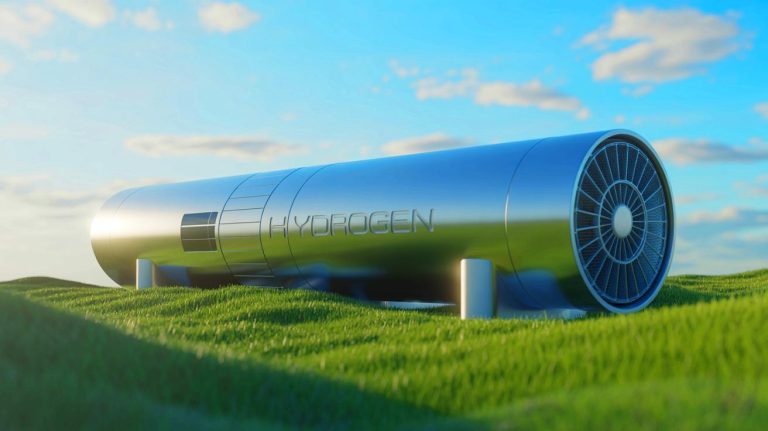| IN A NUTSHELL |
|
In a significant stride towards sustainable energy solutions, SunHydrogen, a U.S.-based clean energy company, has unveiled its largest hydrogen module yet. This innovative technology harnesses the power of sunlight and water to produce renewable hydrogen. The module, measuring 20.7 square feet, represents the most advanced iteration of SunHydrogen’s proprietary technology. It signifies a major leap in the quest for commercial-scale renewable hydrogen production. Highlighting its scalability and potential for off-grid applications, this development promises to revolutionize the hydrogen production landscape, making it more accessible and cost-effective for industrial and mobility uses.
Transformative Hydrogen Production
SunHydrogen’s recent breakthrough in hydrogen production technology marks a pivotal moment in the clean energy sector. The company’s latest module, capable of generating hydrogen from sunlight and water, showcases the potential for renewable energy to meet growing global demands. By integrating solar collection and hydrogen generation into a single unit, SunHydrogen eliminates reliance on traditional electrolyzers and grid power. This innovation allows for distributed, low-cost hydrogen production that can be implemented across various industrial applications.
The significance of this development lies in its ability to operate independently from the electrical grid. This feature not only reduces costs associated with hydrogen production but also enhances energy security by enabling localized energy generation. The module’s design emphasizes efficiency and sustainability, paving the way for a future where clean energy is more widely adopted.
How the eyewear industry is adopting green practices to foster sustainability
Scalability and Off-Grid Potential
The 20.7-square-foot hydrogen module is approximately the size of a standard solar photovoltaic panel. This design choice underscores the scalability of SunHydrogen’s technology, making it feasible for both large-scale industrial applications and smaller, decentralized energy systems. The module’s ability to function off-grid further enhances its appeal, particularly in remote areas where traditional energy infrastructure is lacking.
According to Tim Young, CEO of SunHydrogen, the successful demonstration of this commercial-size reactor is a testament to the company’s progress in transitioning from lab-based research to real-world applications. The potential for widespread adoption of this technology could significantly impact global efforts to reduce carbon emissions and combat climate change.
Commercial Viability and Environmental Impact
The commercial viability of SunHydrogen’s technology is a critical factor in its potential success. By producing hydrogen directly from sunlight and water, the company offers an environmentally friendly alternative to traditional hydrogen production methods, which often rely on fossil fuels. This innovation aligns with global goals to reduce carbon footprints and transition to cleaner energy sources.
Dr. Syed Mubeen, SunHydrogen’s chief technology officer, emphasizes the importance of moving beyond laboratory demonstrations to commercially viable solutions. The company’s ability to achieve this milestone demonstrates the feasibility of hydrogen as a sustainable energy source. As more industries and governments shift towards renewable energy, technologies like SunHydrogen’s could play a crucial role in shaping a sustainable future.
Future Implications and Challenges
While SunHydrogen’s technology holds immense promise, several challenges remain in the path to widespread adoption. Market acceptance, regulatory hurdles, and the need for infrastructure development are critical factors that will influence the technology’s success. Additionally, the initial cost of deployment and the competitive landscape of the energy sector may pose challenges to rapid commercialization.
Despite these obstacles, the potential benefits of SunHydrogen’s technology are undeniable. By providing a clean, renewable source of hydrogen, the company contributes to reducing global reliance on fossil fuels. The environmental impact of widespread hydrogen adoption could be profound, driving significant reductions in greenhouse gas emissions.
SunHydrogen’s innovative approach to hydrogen production represents a significant advancement in the clean energy landscape. As the world continues to seek sustainable solutions to energy challenges, the company’s technology could play a pivotal role in shaping future energy systems. What further innovations might emerge as the clean energy sector continues to evolve?
Did you like it? 4.5/5 (30)





This is exciting news! How soon can we expect to see these modules in widespread use? 🌞
How does the efficiency of this module compare to traditional hydrogen production methods?
Sounds too good to be true! What’s the catch? 😏
20.7 square feet? That’s a giant module! How much hydrogen can it actually produce?
Thank you for the informative article! Can’t wait to see the future of clean energy. 🌍
How does SunHydrogen plan to address the initial deployment costs?
Is this technology suitable for residential use, or is it just for industrial applications?
What are the environmental impacts of producing these modules?
Great innovation, but what about the maintenance costs?
Are there any plans to integrate this with existing renewable energy systems like solar panels?
So cool! Imagine all the off-grid possibilities with this technology. 🌞
Can the module operate in areas with limited sunlight?
How does the lifespan of these modules compare to traditional solar panels?
Is there a risk of hydrogen leaks or other safety concerns?
Love the concept! But what about scalability in urban environments?
When will this technology be available outside the U.S.?
How does the cost of hydrogen produced by this module compare to fossil fuel-derived hydrogen?
Is there potential for this technology to be used in transportation?
Why haven’t we heard more about this before? Seems like a game-changer!
Could this be the solution to energy issues in remote and rural areas? 🚜
How much water is required for the module to operate?
I’m excited to see efforts to reduce carbon emissions, but what’s the timeline for global adoption?
What regulatory hurdles does SunHydrogen face before full commercialization?